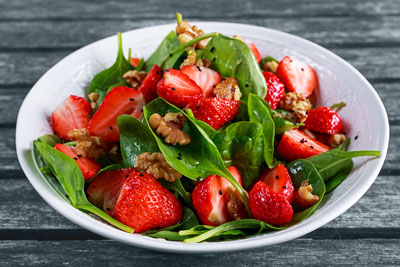Cancer Prevention
Anti-Cancer Diet known as The AAA Diet®
Cancer prevention is defined as active measures taken to decrease the risk of cancer. The vast majority of cancer risk factors are due to environmental factors. Many of these factors are controllable. Cancer may be preventable by avoiding certain risk factors including: tobacco, obesity, an insufficient diet, physical inactivity, alcohol, sexually transmitted infections and air pollution.
PREVENTION IS THE BEST MEDICINE!
According to Cancer Prevention Research, prevention is the best medicine.
Acidosis may be avoidable by following the principles of The AAA Diet® (Acid Alkaline Association) and learning to avoid high acid-forming diets, medications and a toxic lifestyle that could eventually lead to the development of various forms of cancers.

There are two factors that are always present with cancer cells: (1) an acidic pH and (2) a lack of oxygen. Both factors are produced by acidosis.
We need to learn how to manipulate pH and Oxygen. Remember, the pH number is an exponent number of 10; therefore, a small difference in pH translates to a BIG difference in the number of oxygen or OH-ions.
- Blood with a pH value of 7.45 contains 64.9% more oxygen than blood with a pH value of 7.3.
- Cancer needs an acid/low oxygen environment to survive and flourish.
- The bodies of terminal cancer patients are approximately 1000 times more acidic than they should be. This equates to dangerously low amounts of oxygen at the cellular level.
- In the absence of oxygen, glucose undergoes fermentation to lactic acid. This causes the pH of the cell to drop even lower. Urine and saliva pH of terminal cancer patients almost always runs between 4.0 and 5.5.
Our bodies simply cannot effectively fight disease if our body pH is not properly balanced.
Active Measures to Help Prevent Cancer
Dietary
While many dietary recommendations have been proposed to reduce the risk of cancer, few have significant supporting scientific evidence. The primary dietary factors that increase risk are obesity and alcohol consumption; with a diet low in fruits and vegetables and high in red meat being implicated but not confirmed. Consumption of coffee is associated with a reduced risk of liver cancer. Studies have linked consumption of red or processed meat to an increased risk of breast cancer, colon cancer, and pancreatic cancer (a phenomenon which could be due to the presence of carcinogens in foods cooked at high temperatures).
Dietary recommendations for cancer prevention typically include eating mainly vegetables, fruit, whole grains and fish along with a reduced intake of red meat, animal fat and refined sugar.
-
Medications
The idea that medications can be used to prevent cancer is attractive. Evidence supports their use in a few defined circumstances. In the general population NSAIDs reduce the risk of colorectal cancer, however, due to the cardiovascular and gastrointestinal side effects, they cause overall harm when used for prevention. Daily use of tamoxifen or raloxifene has been demonstrated to reduce the risk of developing breast cancer in high-risk women.
Vitamins have not been found to be effective at preventing cancer, although low blood levels of Vitamin D are correlated with increased cancer risk. Whether this relationship is causal and vitamin D supplementation is protective is not determined. Beta-carotene supplementation has been found to increase lung cancer rates in those who are at high risk. Folic acid supplementation has not been found effective in preventing colon cancer and may increase colon polyps.
-
Vaccinations
Vaccines have been developed that prevent some infection by some viruses. Human papillomavirus vaccine (Gardasil and Cervarix) decreases the risk of developing cervical cancer. The hepatitis B vaccine prevents infection with hepatitis B virus and thus decreases the risk of liver cancer.
-
Screening
Cancer screening involves efforts to detect cancer after it has formed, but before any noticeable symptoms appear. This may involve physical examination, blood or urine tests or medical imaging. Cancer screening is currently not possible for many types of cancers, and even when tests are available, they may not be recommended for everyone.
The most significant risk factor for developing cancer is old age. Although it is possible for cancer to strike at any age, most people who are diagnosed with invasive cancer are over the age of 65. According to cancer researcher Robert A. Weinberg, "If we lived long enough, sooner or later we all would get cancer."
